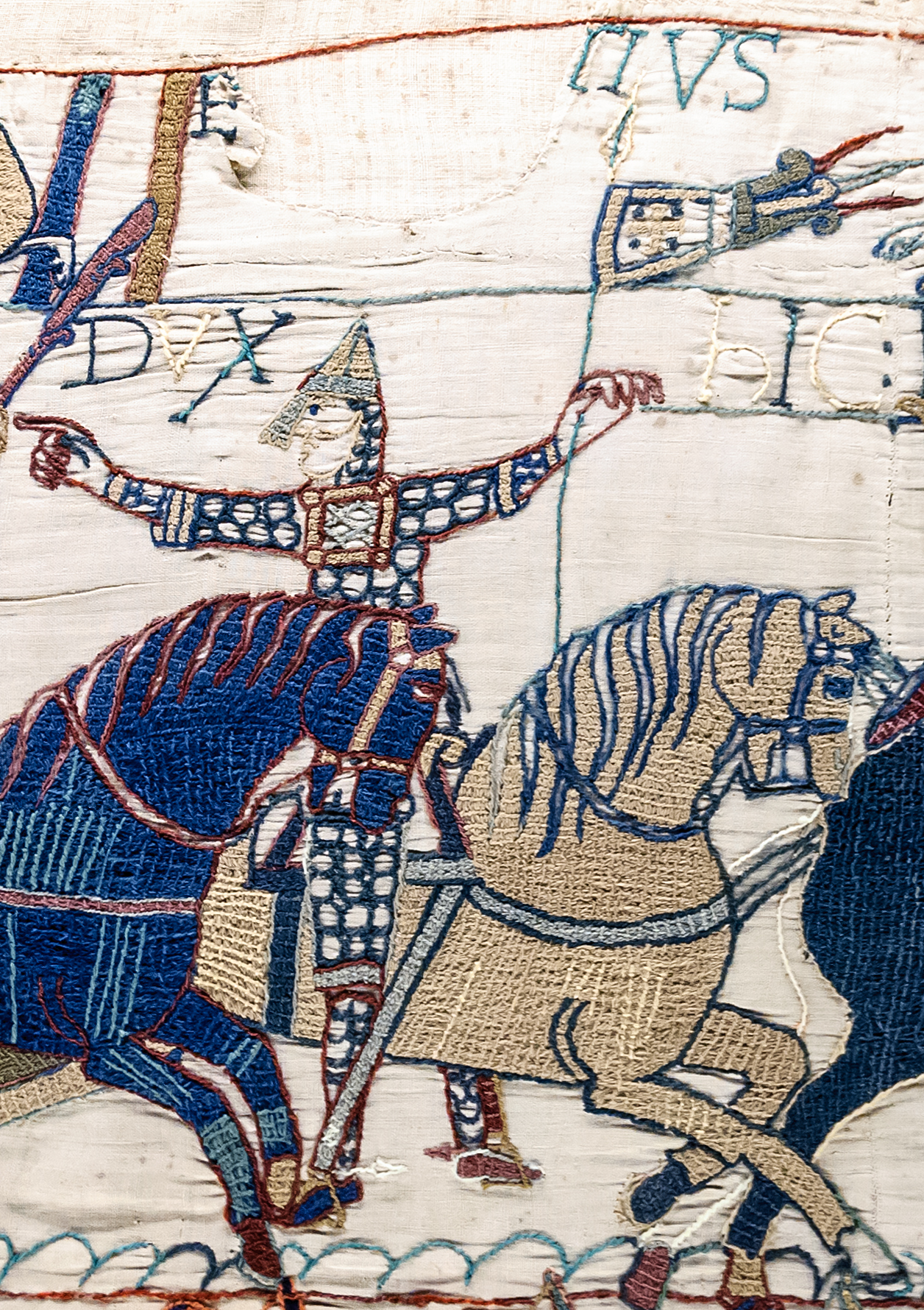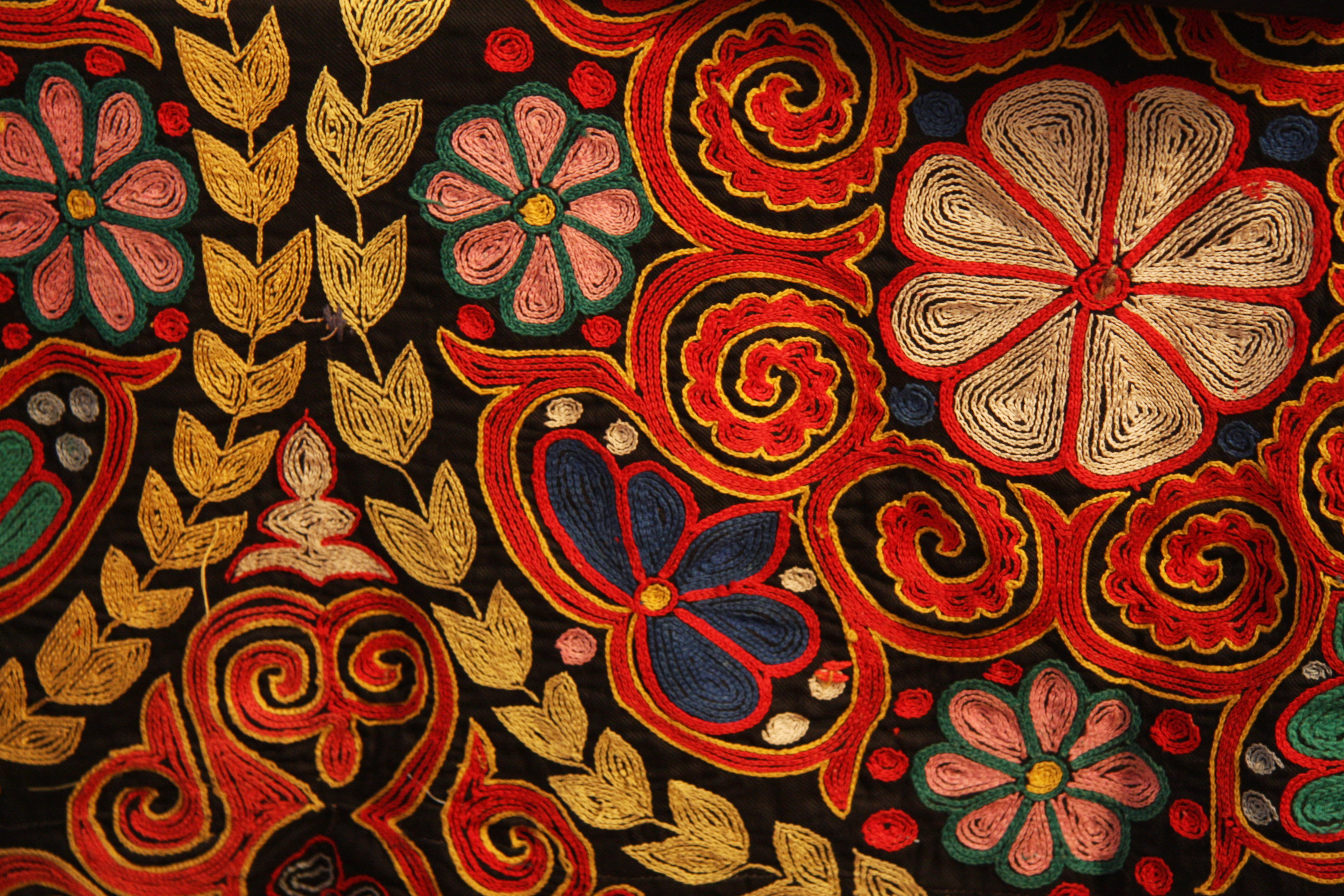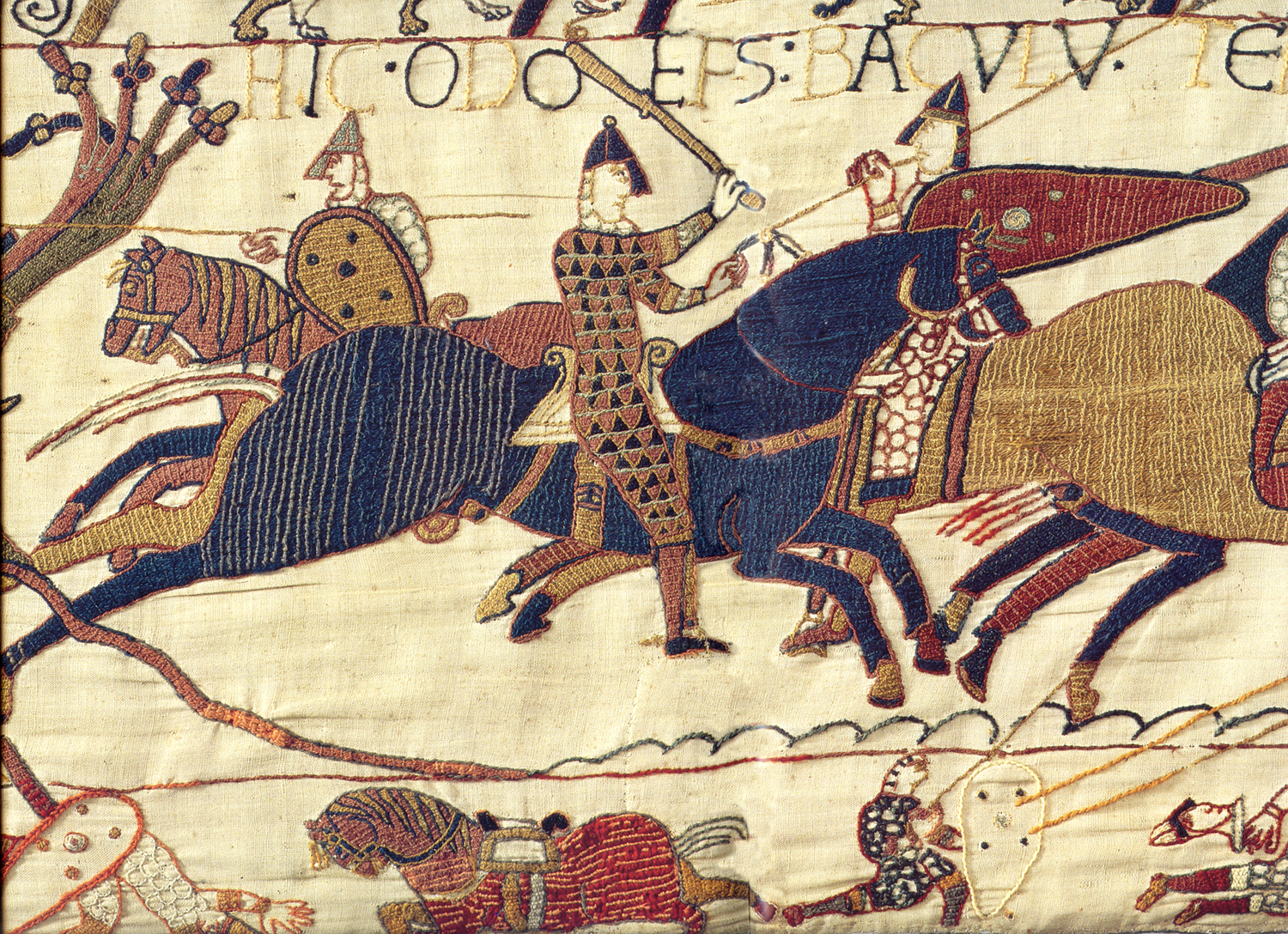|
Crewel
Crewel embroidery, or crewelwork, is a type of surface embroidery using wool. A wide variety of different embroidery stitches are used to follow a design outline applied to the fabric. The technique is at least a thousand years old. Crewel embroidery is not identified with particular styles of designs, but rather is embroidery with the use of this wool thread. Modern crewel wool is a fine, two-ply or one-ply yarn available in many different colours. Crewel embroidery is often associated with England in the 17th and 18th centuries, and from England was carried to the American colonies. It was particularly popular in New England. The stitches and designs used in America were simpler and more economical with the scarce crewel wool. The Deerfield Society of Blue and White Needlework (1896–1926) revived interest in crewel embroidery in the United States. Description of the technique The crewel technique is not a counted-thread embroidery (like canvas work), but a style of fr ... [...More Info...] [...Related Items...] OR: [Wikipedia] [Google] [Baidu] |
Bed Hangings
Bed hangings or bed curtains are fabric panels that surround a bed; they were used from medieval times through to the 19th century. Bed hangings provided privacy when the master or great bed was in a public room, such as the parlor, but also kept in warmth and showed evidence of wealth when beds were located in private areas of the home. When bedrooms became more common in the mid-1700s, the use of bed hangings diminished. Bed hangings were made of various fabrics, depending on the place, time period, and wealth of the owner. Fabrics included wool, cotton, linen, fustian, and, for those who could afford it, silk or velvet. Stitches were worked in wool or, for the rich or the nobility, silk and gold. Decorations on bed hangings also varied based on geography and time period. French hangings during the Renaissance might depict embroidered scenes from the Bible, mythology, or allegory. Hangings from the UK used floral, leaf, chinoiserie, and animal themes at various times, and those fr ... [...More Info...] [...Related Items...] OR: [Wikipedia] [Google] [Baidu] |
Jacobean Embroidery
Jacobean embroidery refers to embroidery styles that flourished in the reign of King James I of England in first quarter of the 17th century. The term is usually used today to describe a form of crewel embroidery used for furnishing characterized by fanciful plant and animal shapes worked in a variety of stitches with two-ply wool yarn on linen. Popular motifs in Jacobean embroidery, especially curtains for bed hangings, are the Tree of Life and stylized forests, usually rendered as exotic plants arising from a landscape or ''terra firma'' with birds, stags, squirrels, and other familiar animals.Christie, Grace: ''Embroidery and Tapestry Weaving'', London 1912 Origins Early Jacobean embroidery often featured scrolling floral patterns worked in colored silks on linen, a fashion that arose in the earlier Elizabethan era. Embroidered jackets were fashionable for both men and women in the period 1600-1620, and several of these jackets have survived. Designs Often based on tre ... [...More Info...] [...Related Items...] OR: [Wikipedia] [Google] [Baidu] |
Embroidery
Embroidery is the art of decorating Textile, fabric or other materials using a Sewing needle, needle to stitch Yarn, thread or yarn. It is one of the oldest forms of Textile arts, textile art, with origins dating back thousands of years across various cultures. Common Embroidery stitch, stitches found in early embroidery include the chain stitch, Buttonhole stitch, buttonhole or blanket stitch, running stitch, satin stitch, and cross stitch. Modern embroidery continutes to utilize traditional techniques, though many contemporary stitches are exclusive to machine embroidery. Embroidery is commonly used to embellish accessories and garments is usually seen on quilts, clothing, and accessories. In addition to thread, embroidery may incorporate materials such as Pearl, pearls, Bead, beads, Quill, quills, and Sequin, sequins to highlight texture and design. Today, embroidery serves both decorative and functional purposes and is utilized in fashion expression, cultural identity, and ... [...More Info...] [...Related Items...] OR: [Wikipedia] [Google] [Baidu] |
Free Embroidery
Embroidery is the art of decorating fabric or other materials using a needle to stitch thread or yarn. It is one of the oldest forms of textile art, with origins dating back thousands of years across various cultures. Common stitches found in early embroidery include the chain stitch, buttonhole or blanket stitch, running stitch, satin stitch, and cross stitch. Modern embroidery continutes to utilize traditional techniques, though many contemporary stitches are exclusive to machine embroidery. Embroidery is commonly used to embellish accessories and garments is usually seen on quilts, clothing, and accessories. In addition to thread, embroidery may incorporate materials such as pearls, beads, quills, and sequins to highlight texture and design. Today, embroidery serves both decorative and functional purposes and is utilized in fashion expression, cultural identity, and custom-made gifts. History Origins The process used to tailor, patch, mend and reinforce cloth fo ... [...More Info...] [...Related Items...] OR: [Wikipedia] [Google] [Baidu] |
Chain Stitch
Chain stitch is a sewing and embroidery technique in which a series of looped stitches form a chain-like pattern. Chain stitch is an ancient craft – examples of surviving Chinese chain stitch embroidery worked in silk thread have been dated to the Warring States period (5th – 3rd century BC). Handmade chain stitch embroidery does not require that the needle pass through more than one layer of fabric. For this reason the stitch is an effective surface embellishment near seams on finished fabric. Because chain stitches can form flowing, curved lines, they are used in many surface embroidery styles that mimic "drawing" in thread. Chain stitches are also used in making tambour lace, needlelace, macramé and crochet. In Azerbaijan, in the Sheki region, this ancient type of needlework is called ''tekeldus''. History The earliest archaeological evidence of chain stitch embroidery dates from 1100 BC in China. Excavated from royal tombs, the embroidery was made using thr ... [...More Info...] [...Related Items...] OR: [Wikipedia] [Google] [Baidu] |
Deerfield Society Of Blue And White Needlework
The Deerfield Society of Blue and White Needlework was founded in Deerfield, Massachusetts, in 1896 by Margaret C. Whiting and Ellen Miller (artist), Ellen Miller. They formed the society in 1896 as a way to help residents boost the town's economy by reviving American needlework from the 1700s. It was inspired by the crewel embroidery of 18th-century women who had lived in the Deerfield, Massachusetts, area. Members of the Blue and White Society initially used the patterns and stitches from these earlier works, but because these new embroideries were not meant to replicate the earlier works, the embroidery soon deviated from the original versions with new patterns and stitches, and even the use of linen, rather than wool, thread. The society disbanded in 1926 for several reasons. Ellen Miller was in declining health; the trained stitchers were getting old and could not continue; Margaret C. Whiting's sight was fading; and, the design and quality of commercially produced items wa ... [...More Info...] [...Related Items...] OR: [Wikipedia] [Google] [Baidu] |
Sewing Needle
A sewing needle, used for hand-sewing, is a long slender tool with a pointed tip at one end and a hole (or ''eye'') to hold the sewing thread. The earliest needles were made of bone or wood; modern needles are manufactured from high carbon steel wire and are nickel- or gold, 18K gold-plated for corrosion resistance. High-quality embroidery needles are plated with two-thirds platinum and one-third titanium alloy. Traditionally, needles have been kept in needle books or needlecases which have become objects of adornment. Sewing needles may also be kept in an étui, a small box that held needles and other items such as scissors, pencils and tweezers. Types of hand sewing needles Hand-sewing needles come in a variety of types/classes designed according to their intended use. With each type also varying in size. * Sharp needles: used for general hand sewing; built with a sharp point, a round eye, and are of medium length. Those with a double-eyes are able to carry two strands of th ... [...More Info...] [...Related Items...] OR: [Wikipedia] [Google] [Baidu] |
Embroidery Thread
Embroidery thread is yarn that is manufactured or hand- spun specifically for embroidery and other forms of needlework. Embroidery thread often differs widely, coming in many different fiber types, colors and weights. Type of embroidery thread Threads for hand embroidery include: Crewel yarn *Crewel yarn (also known as crewel wool or French wool) is a fine 2-ply yarn of wool or, less often, a wool-like acrylic. Strands may be separated or combined; it is commonly used for delicate embroidery. Embroidery floss *Embroidery floss or stranded cotton is a loosely twisted, slightly glossy 6-strand thread, usually of cotton but also manufactured in silk, linen, and rayon. Cotton floss is the standard thread for cross-stitch, and is suitable for most embroidery excluding robust canvas embroidery. Extremely shiny rayon floss is characteristic of Brazilian embroidery. The strands of embroidery floss can be separated, and may be used alone or in combination with one another. Historically, str ... [...More Info...] [...Related Items...] OR: [Wikipedia] [Google] [Baidu] |
Bayeux Tapestry
The Bayeux Tapestry is an embroidery, embroidered cloth nearly long and tall that depicts the events leading up to the Norman Conquest, Norman Conquest of England in 1066, led by William the Conqueror, William, Duke of Normandy challenging Harold Godwinson, Harold II, King of England, and culminating in the Battle of Hastings. It is thought to date to the 11th century, within a few years of the battle. Now widely accepted to have been made in England, perhaps as a gift for William, it tells the story from the point of view of the conquering Normans and for centuries has been preserved in Normandy. According to Sylvette Lemagnen, conservator of the tapestry, in her 2005 book ''La Tapisserie de Bayeux'': The cloth consists of 58 scenes, many with Latin ''tituli'', embroidered on linen with coloured woollen yarns. It is likely that it was commissioned by Bishop Odo of Bayeux, William's maternal half-brother, and made for him in England in the 1070s. In 1729, the hanging was r ... [...More Info...] [...Related Items...] OR: [Wikipedia] [Google] [Baidu] |
Satin Stitch
In sewing and embroidery, a satin stitch or damask stitch is a series of flat stitches that are used to completely cover a section of the background fabric. Narrow rows of satin stitch can be executed on a standard sewing machine using a zigzag stitch or a special satin stitch foot. In order to maintain a smooth edge, shapes can be outlined with back, split or chain stitch before the entire shape including the outline is covered with satin stitch. In traditional practice, satin stitch is employed to fill an area without the presence of an outline, resulting in smooth shapes and even lines created by the stitching. Machine-made satin stitch is often used to outline and attach appliques to the ground fabric. Geography The satin stitch is a common form of needlework traditions worldwide; it is notable in North Africa, South America, Western Asia, Southeast Asia, the Indian subcontinent, and the Middle East. Satin stitch is also characteristic of Chinese embroidery. China ... [...More Info...] [...Related Items...] OR: [Wikipedia] [Google] [Baidu] |
Couching (embroidery)
In embroidery, couching and laid work are techniques in which yarn or other materials are laid across the surface of the ground fabric and fastened in place with small stitches of the same or a different yarn. The couching threads may be either the same color as the laid threads or a contrasting color. When couching threads contrast with laid threads, patterns may be worked in the couching stitches. Applications Laid work is one of two techniques used in the Bayeux Tapestry, an embroidered cloth probably dating to the later 1070s. (The other technique is stem stitch.) Underside couching of metal thread was characteristic of earlier Opus Anglicanum in Medieval England and was also used historically in Sicily and rarely in other parts of Italy and France. Couching is also characteristic of Japanese metal-thread embroidery and Central Asian suzani work. Another example of Islamic embroidery is the strong tradition of couching stitch in Palestine. Production centered on Beth ... [...More Info...] [...Related Items...] OR: [Wikipedia] [Google] [Baidu] |







